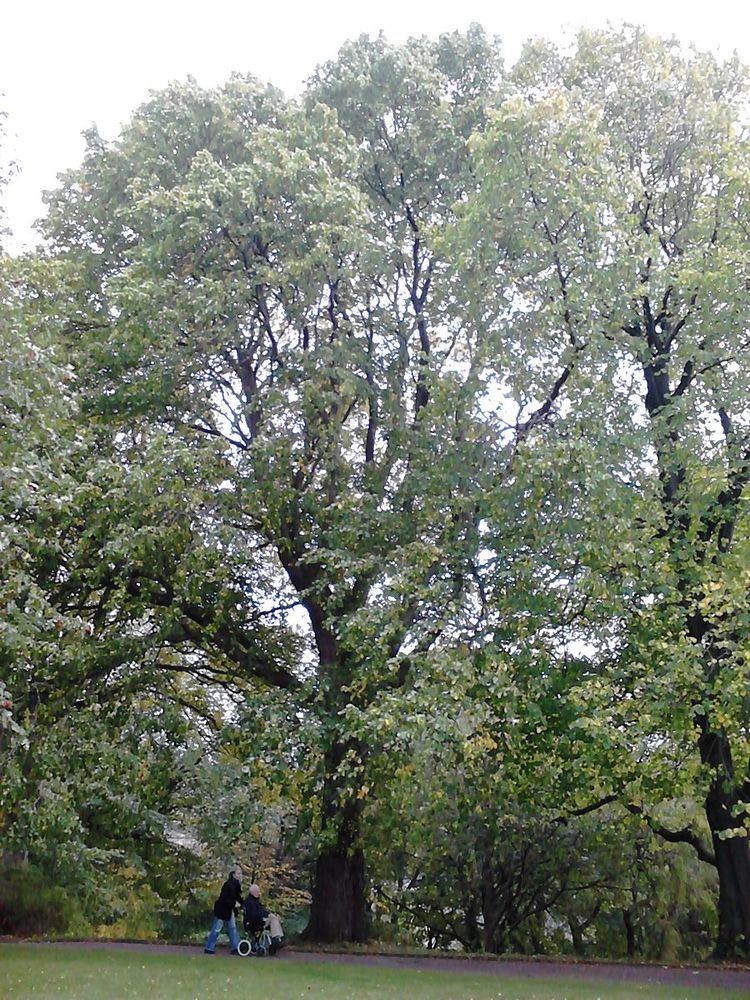Cultivar 'Tiliaefolia' | Origin Europe | |
 | ||
The Elm cultivar Ulmus 'Tiliaefolia' was first mentioned by Host in Flora Austriaca 1: 329. 1827, as U. tiliaefolia.
Contents
Description
The tree was said to have ovate leaves, rounded or subcordate and not usually strongly oblique at the base. The catalogue of the Späth nursery, Berlin, describes 'Tiliifolia' [:'Tiliaefolia'] as having smooth shiny dark green leaves. Host said the leaf was biserrate.
Pests and diseases
A specimen at the Ryston Hall [1], Norfolk, arboretum, obtained from the Späth nursery in Berlin before 1914, was killed by the earlier strain of Dutch elm disease prevalent in the 1930s.
Cultivation
No examples of 'Tiliaefolia' are known to survive. Reichenbach noted briefly that the tree was once grown in Bohemia and Austria. One tree was planted in 1898, as U. tiliifolia, at the Dominion Arboretum, Ottowa, Canada. Three specimens were supplied by the Späth nursery to the Royal Botanic Garden Edinburgh in 1902 as U. tiliifolia, and may still exist in Edinburgh as it was the practice of the Garden to distribute trees about the city (viz. the Wentworth Elm); the current list of Living Accessions held in the Garden per se does not list the plant. A possible example, an old elm with leaves close to herbarium specimens of Späth's 'Tiliaefolia', stands (2016) in Belgrave Cescent Gardens, Edinburgh.
